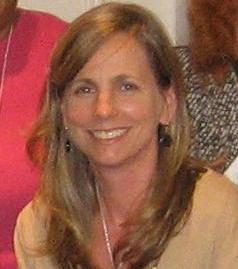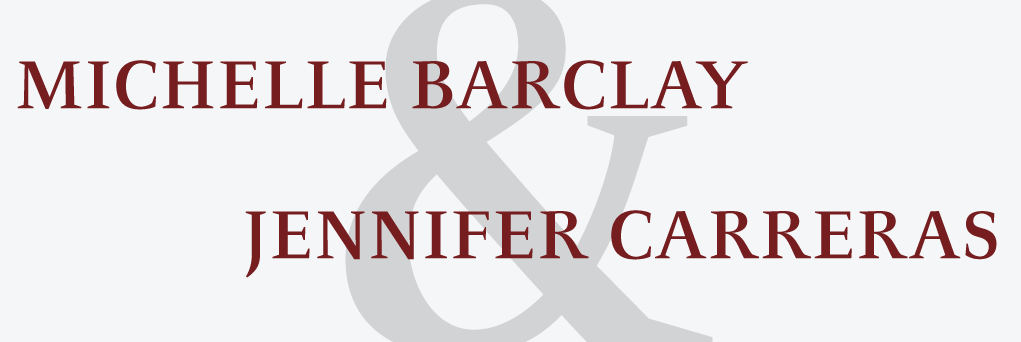Hope’s* earliest memories are with her younger sister and her mother. But these are not the fond memories of a warm and carefree childhood, rather they are full of the pain she felt from watching her mother struggle with drug addiction.
Hope’s mother loved her two girls, but did not consistently provide for the basic needs of her children, often leaving them for long periods of time with relatives with no explanation.
At the age of 8, Hope’s life changed forever. Her relatives, realizing that the girls had been abandoned, and deciding they would not or could not care for the two children, called Georgia’s Division of Family and Children Services (DFCS) and the children entered foster care.

Michelle Barclay
Thus began a whirlwind of foster homes, group homes, assessments, meetings and court dates. During these first few months, it was discovered that Hope had been sexually abused during one of her mother’s disappearances and was diagnosed with a number of mental health and behavioral issues. Shortly thereafter, she was introduced to a person who would come to be the most stable adult connection she would encounter for years; her therapist Dr. Tammy Coots. Weekly therapy began.
Hope is a beautiful and intelligent girl, so it was no surprise there was a lot of interest in her from potentially adoptive parents. What these parents did not understand, however, was that Hope was still in contact with her mother, still felt her mother’s love for her, and would come to view adoption as turning her back on that love.
The first adoptive home did not work out. When it became clear that adoption was on the horizon, Hope began acting out against everyone in the home and at school. She would lie, steal, manipulate, and become verbally and physically aggressive -- first weekly, then daily, then, as the date of the finalization of the adoption drew closer, constantly. The adoptive foster parents changed their minds and Hope was removed from their home.
A year later, another adoptive home took in Hope and her sister.When adoption was imminent, Hope again engaged in the same disruptive and “testing” behaviors. This time, the foster parents continued with the adoption of Hope’s sister but asked that Hope be removed from their home.
A year or two later, a third adoptive home was identified, and Hope moved in with the family. Sticking to her pattern, She engaged in her behaviors as the adoption date approached. But this time, two days before the finalization, it was Hope who broke down crying and hysterically begged her case manager and foster parents not to go through with it. She felt she simply could not give up on her mother, thinking that is what adoption meant.
In the midst of her movement in and out of adoptive homes, there was one foster home that made a mark on Hope. It was a place where she felt truly at home. From 2005-2007, Hope lived in the foster home a woman we’ll call Ms. Lisa.
Ms. Lisa could not commit to adopting Hope at that time, but she was committed to Hope in all other aspects. A bond had been created that existed long after Hope left Ms. Lisa’s home. In 2010, after eight years, eight separate placements which included three failed adoptive placements, Hope’s savvy case manager remembered that bond and called Ms. Lisa. Hope was placed back in Ms. Lisa’s home, and this time, it would be permanent.
In 2011, Hope’s case was identified for review by the Cold Case Project (a project designed to review cases of children with long stays in foster care). It appeared that some additional ammunition may be needed to find a permanent home for this child.
Hope began having therapeutic contact with her mother. She intended to continue her relationship with her mother, but she wanted Ms. Lisa to be her life-long “family” resource. Dr. Coots, still Hope’s weekly therapist, had recommended months before that all discussions of adoption cease, and when that option was taken off of the table for Hope, her behavior and well-being dramatically improved. Hope and Ms. Lisa agreed that Ms. Lisa should become her permanent guardian, an option that would not terminate the legal relationship between Hope and her mother. Dr. Coots agreed.

Jenifer Carreras
The state’s case manager and supervisor and the Cold Case team worked to obtain state assistance for Ms. Lisa so she could continue to provide for Hope’s needs. On Sept. 6, 2011, after nine years in DFCS custody and at the age of 17, permanency was finalized for Hope.
Finally, she had a legal guardian and, more importantly, a forever home.
*Hope is not her real name, but her story is real. This teen was part of a statewide review called the Cold Case Project. The Cold Case Project is being conducted in full partnership and transparency with the Division of Family and Children Services . The project is made possible by the Casey Family Program funds.
Michelle Barclay is project director of the Supreme Court of Georgia’s Committee on Justice for Children at the Administrative Office of the Courts. Michelle and Andy Barclay founded and endowed the Barton Child Law and Policy Clinic in partnership with the Emory University School of Law. Jenifer Carreras is managing attorney for the Law Office of Jen Carreras, LLC, and is a 2011 Cold Case Fellow. Ms. Carreras is a former attorney for the Department of Family and Children Services and devotes her law practice to children's legal issues.

Michelle and Jenifer:
This article drives home the point that seeing kids as individual human beings, each with their own personal stories, is vital to ensuring a better life for them. Thanks for sharing this story with us and thanks for the work you do. It’s so very important.